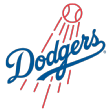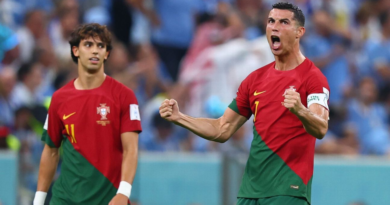Who to target, who to move for your stretch run
With the trade deadline now in our rearview, rosters should become more settled, simplifying our fantasy baseball planning for these stretch run weeks ahead.
Oh, sure, there’ll be a handful of prospects recalled in the coming weeks, which could reshape certain teams’ rosters, and injuries always influence teams’ plans. But we’re beyond the point where high-impact names will change uniforms, so it’s fair to say that most teams now have the rosters with which they’ll conclude their seasons. Things won’t shift nearly as much from this point forward as they have during the past week.
The upshot of all this is that it’s a prime time to reevaluate where teams stand on the schedule front, determining which are in the best and worst places as far as the matchups ahead. Our trade deadlines are rapidly approaching — in ESPN standard leagues, that time arrives at noon ET on Aug. 18 — and it’s important to consider the schedule ahead when evaluating your trades.
To do this, I’ve used the Forecaster engine to weight all 30 teams’ remaining matchups, both evaluating the hitting and pitching sides, accounting for things like home/road assignments, strength of the opponent’s offense or pitching staff and park factors. Here are the teams that most stand out on either side:
Teams with the best remaining pitching matchups
 Los Angeles Dodgers (24% more favorable than league average): Their current series against the Oakland Athletics only began what was an outstanding stretch of August pitching matchups, as 19 of their next 21 games will be played against teams that have scored beneath the league’s average rate. Taking their remaining schedule as a whole, the only truly scary matchups Dodgers pitchers will face the rest of the way are in their four-game series against the Atlanta Braves to conclude the month and their four-game, late-September trip to Colorado’s Coors Field. The Dodgers were spurned by Eduardo Rodriguez and failed to acquire Justin Verlander at the deadline, but Lance Lynn is a decent consolation prize with plenty of fantasy rebound potential (he’s still available in 26.5% of ESPN leagues). Additionally, the team having a schedule as favorable as this is pleasing news to those counting on rookies Bobby Miller and Emmet Sheehan, and it provides an lighter path for Clayton Kershaw in his approaching return from a shoulder injury.
Los Angeles Dodgers (24% more favorable than league average): Their current series against the Oakland Athletics only began what was an outstanding stretch of August pitching matchups, as 19 of their next 21 games will be played against teams that have scored beneath the league’s average rate. Taking their remaining schedule as a whole, the only truly scary matchups Dodgers pitchers will face the rest of the way are in their four-game series against the Atlanta Braves to conclude the month and their four-game, late-September trip to Colorado’s Coors Field. The Dodgers were spurned by Eduardo Rodriguez and failed to acquire Justin Verlander at the deadline, but Lance Lynn is a decent consolation prize with plenty of fantasy rebound potential (he’s still available in 26.5% of ESPN leagues). Additionally, the team having a schedule as favorable as this is pleasing news to those counting on rookies Bobby Miller and Emmet Sheehan, and it provides an lighter path for Clayton Kershaw in his approaching return from a shoulder injury.
Trade targets: Lynn, closer Evan Phillips.
 Seattle Mariners (19% more favorable): Though they were sellers at the deadline, the Mariners retained all of their young arms, including Logan Gilbert, a probable Super Two arbitration player after the season. That’s a good thing, considering how soft the remaining schedule is for Gilbert, George Kirby, Bryce Miller, Bryan Woo and, of course, ace Luis Castillo. The Mariners still have all seven of their games against the Kansas City Royals and six more against the Athletics on their schedule, and 25 of their final 55 games will be played at their pitching-friendly home, T-Mobile Park. It’s great news, considering the likelihood that the team will rein in the innings totals for their younger starts when and if they fall out of wild-card contention, as it means getting the most out of said starters while they’re not on short leashes. Additionally, a generally favorable schedule on the pitching front is a great thing for a team’s closer, with the plenty capable Andres Munoz looking like the favorite to handle those chores the rest of the way.
Seattle Mariners (19% more favorable): Though they were sellers at the deadline, the Mariners retained all of their young arms, including Logan Gilbert, a probable Super Two arbitration player after the season. That’s a good thing, considering how soft the remaining schedule is for Gilbert, George Kirby, Bryce Miller, Bryan Woo and, of course, ace Luis Castillo. The Mariners still have all seven of their games against the Kansas City Royals and six more against the Athletics on their schedule, and 25 of their final 55 games will be played at their pitching-friendly home, T-Mobile Park. It’s great news, considering the likelihood that the team will rein in the innings totals for their younger starts when and if they fall out of wild-card contention, as it means getting the most out of said starters while they’re not on short leashes. Additionally, a generally favorable schedule on the pitching front is a great thing for a team’s closer, with the plenty capable Andres Munoz looking like the favorite to handle those chores the rest of the way.
Trade target: Munoz.
Top 5 pitching schedules the rest of the way: Dodgers, New York Mets (22% more favorable), Mariners, Braves (14%), Pittsburgh Pirates (12%).
Teams with the worst remaining pitching matchups
 Cincinnati Reds (21% less favorable than league average): They’ve squeezed quite a bit out of Andrew Abbott, Ben Lively and Brandon Williamson, all of whom were initially injury fill-ins, but things aren’t going to be easy for the Reds the rest of the way. That they call Great American Ball Park, one of the game’s best hitting environments, their home, it doesn’t help on the matchups front, as the Reds play 27 of their final 53 games there and have the second-worst schedule in terms of park factors, only barely ahead of the Colorado Rockies. There’s hope that both Hunter Greene and Nick Lodolo will return in time to help the team in the season’s final month (and possibly more, in Greene’s case), but both will need to be that much better once healthy in order to overcome their treacherous remaining schedule.
Cincinnati Reds (21% less favorable than league average): They’ve squeezed quite a bit out of Andrew Abbott, Ben Lively and Brandon Williamson, all of whom were initially injury fill-ins, but things aren’t going to be easy for the Reds the rest of the way. That they call Great American Ball Park, one of the game’s best hitting environments, their home, it doesn’t help on the matchups front, as the Reds play 27 of their final 53 games there and have the second-worst schedule in terms of park factors, only barely ahead of the Colorado Rockies. There’s hope that both Hunter Greene and Nick Lodolo will return in time to help the team in the season’s final month (and possibly more, in Greene’s case), but both will need to be that much better once healthy in order to overcome their treacherous remaining schedule.
Sell-high candidate: Abbott.
 Toronto Blue Jays (12% less favorable): For a team currently in wild-card position, the Blue Jays have been disastrously bad within their division; their 7-22 record and resulting .241 winning percentage against the competitive American League East is the second-worst by any team within its division this year. That’s a problem when the Blue Jays have 17 more games against the Baltimore Orioles, Boston Red Sox and Tampa Bay Rays, all of which have been top-8 offenses in terms of runs per game for the season. Sure, the Blue Jays have some soft schedule landing spots, including seven games against the Cleveland Guardians, and a Labor Day week of games against the Athletics and Royals, but they’ve also got series ahead in Colorado and Cincinnati, as well as four against the Texas Rangers. The Blue Jays are a legitimate postseason contender with a strong pitching staff, but things aren’t going to be easy on the matchups front from this point forward.
Toronto Blue Jays (12% less favorable): For a team currently in wild-card position, the Blue Jays have been disastrously bad within their division; their 7-22 record and resulting .241 winning percentage against the competitive American League East is the second-worst by any team within its division this year. That’s a problem when the Blue Jays have 17 more games against the Baltimore Orioles, Boston Red Sox and Tampa Bay Rays, all of which have been top-8 offenses in terms of runs per game for the season. Sure, the Blue Jays have some soft schedule landing spots, including seven games against the Cleveland Guardians, and a Labor Day week of games against the Athletics and Royals, but they’ve also got series ahead in Colorado and Cincinnati, as well as four against the Texas Rangers. The Blue Jays are a legitimate postseason contender with a strong pitching staff, but things aren’t going to be easy on the matchups front from this point forward.
Sell-high candidate: Jose Berrios, who has been pitching over his head to a tune of a 4.52 Statcast expected ERA versus 3.31 true ERA.
Bottom 5 pitching schedules the rest of the way: Rockies (25% less favorable), Reds, Rays (16%), Blue Jays, Washington Nationals (11%).
Teams with the best remaining hitting matchups
 Blue Jays (20% more favorable than league average): Lo and behold, maybe we’ve found the way the Blue Jays will most likely steer themselves into the playoffs! Yes, their hitting schedules are outstanding, in part because neither the aforementioned Orioles nor Red Sox have a rise-to-the-top pitching staff, those Coors Field and Great American Ball Park trips are great for their offense, and there’s that Aug. 28-Sept. 10 stretch (WSH 3, @COL 3, @OAK 3, KC 3) that’s completely dreamy. Point out all you wish how Vladimir Guerrero Jr., George Springer and Daulton Varsho have performed beneath expectations. With upcoming matchups like these, there’s an outstanding chance that this offense will catch fire and go on the kind of run it enjoyed during the second half of last season when it was the third best-scoring offense and a 42-27 team that captured the AL’s top wild-card spot.
Blue Jays (20% more favorable than league average): Lo and behold, maybe we’ve found the way the Blue Jays will most likely steer themselves into the playoffs! Yes, their hitting schedules are outstanding, in part because neither the aforementioned Orioles nor Red Sox have a rise-to-the-top pitching staff, those Coors Field and Great American Ball Park trips are great for their offense, and there’s that Aug. 28-Sept. 10 stretch (WSH 3, @COL 3, @OAK 3, KC 3) that’s completely dreamy. Point out all you wish how Vladimir Guerrero Jr., George Springer and Daulton Varsho have performed beneath expectations. With upcoming matchups like these, there’s an outstanding chance that this offense will catch fire and go on the kind of run it enjoyed during the second half of last season when it was the third best-scoring offense and a 42-27 team that captured the AL’s top wild-card spot.
 Trade target: Guerrero, who has the majors’ widest gap between his expected wOBA (.390) and actual wOBA (.340) in that direction.
Trade target: Guerrero, who has the majors’ widest gap between his expected wOBA (.390) and actual wOBA (.340) in that direction.
Red Sox (17% more favorable): The Blue Jays’ next closest wild-card competitors, 1½ games back for the final spot, the Red Sox might not have done much in the way of acquiring reinforcements at the deadline, but they’re a top-8 offense with nearly as favorable a path on that side of the ball. The Red Sox’s dream portion of the schedule begins next week with series against the Royals, Detroit Tigers and Nationals, which is good timing considering the team will surely still be in the playoff hunt then and rolling out its “A” lineup. Accounting for the 28 remaining games the Red Sox have at extra base hit-inflating Fenway Park, the team has the second most-favorable remaining schedule on the park factor front behind only the Rockies.
Trade target: Triston Casas.
Top 5 hitting schedules the rest of the way: Blue Jays, Chicago White Sox (18%), Red Sox, Dodgers (14%), Pirates (12%).
Teams with the worst remaining hitting matchups
 Rays (32% less favorable than league average): Though they’ve picked up the pace thus far this week, the Rays have run quite cold offensively since the beginning of July, their 3.68 runs per game average including the past three days being second-worst in baseball. Worse yet, they’ll face what is the worst hitting schedule in baseball on all fronts, as they have the misfortune of the fewest remaining games (52), the least-favorable schedule in terms of park factors (their extreme pitchers’ park home heavily influences that), and the least-favorable matchups against lefties, righties and overall. As the Rays have now slipped out of the AL East lead and into the wild-card mix, it won’t help that each of their final 33 games, beginning with an Aug. 29-30 trip to Miami, might come against playoff-hopeful opponents, most of them in that very wild-card hunt. Every one of those teams besides the Los Angeles Angels (4.35 ERA, league’s ERA is 4.30) has a team ERA beneath the league’s average.
Rays (32% less favorable than league average): Though they’ve picked up the pace thus far this week, the Rays have run quite cold offensively since the beginning of July, their 3.68 runs per game average including the past three days being second-worst in baseball. Worse yet, they’ll face what is the worst hitting schedule in baseball on all fronts, as they have the misfortune of the fewest remaining games (52), the least-favorable schedule in terms of park factors (their extreme pitchers’ park home heavily influences that), and the least-favorable matchups against lefties, righties and overall. As the Rays have now slipped out of the AL East lead and into the wild-card mix, it won’t help that each of their final 33 games, beginning with an Aug. 29-30 trip to Miami, might come against playoff-hopeful opponents, most of them in that very wild-card hunt. Every one of those teams besides the Los Angeles Angels (4.35 ERA, league’s ERA is 4.30) has a team ERA beneath the league’s average.
Sell-high candidates: Brandon Lowe (while he’s running hot), Isaac Paredes, Josh Lowe.
 Reds (17% less favorable): It might be surprising to see a team that calls a hitting-friendly environment its home on this side of the scale, but the Reds’ 53 remaining games (second fewest behind the Rays) is a factor here. Additionally, when the Reds are on the road the rest of the way, they’ll play 15 of their 26 remaining at notorious pitchers’ parks in Busch Stadium, Citi Field, Comerica Park, Oracle Park and PNC Park. Additionally, 11 of their 27 remaining home games will be played against AL teams that rank among the game’s top eight in staff ERA. This isn’t to say that the Reds can’t rise to the occasion, and there’s no reason to fear that they might soon hit an inescapable, playoff-killing slump, but they do not have it easy in their quest to capture the National League Central.
Reds (17% less favorable): It might be surprising to see a team that calls a hitting-friendly environment its home on this side of the scale, but the Reds’ 53 remaining games (second fewest behind the Rays) is a factor here. Additionally, when the Reds are on the road the rest of the way, they’ll play 15 of their 26 remaining at notorious pitchers’ parks in Busch Stadium, Citi Field, Comerica Park, Oracle Park and PNC Park. Additionally, 11 of their 27 remaining home games will be played against AL teams that rank among the game’s top eight in staff ERA. This isn’t to say that the Reds can’t rise to the occasion, and there’s no reason to fear that they might soon hit an inescapable, playoff-killing slump, but they do not have it easy in their quest to capture the National League Central.
Sell-high candidates: TJ Friedl, Spencer Steer.
Bottom 5 hitting schedules the rest of the way: Rays, Miami Marlins (19%), Reds, St. Louis Cardinals (17%), San Diego Padres (16%).




